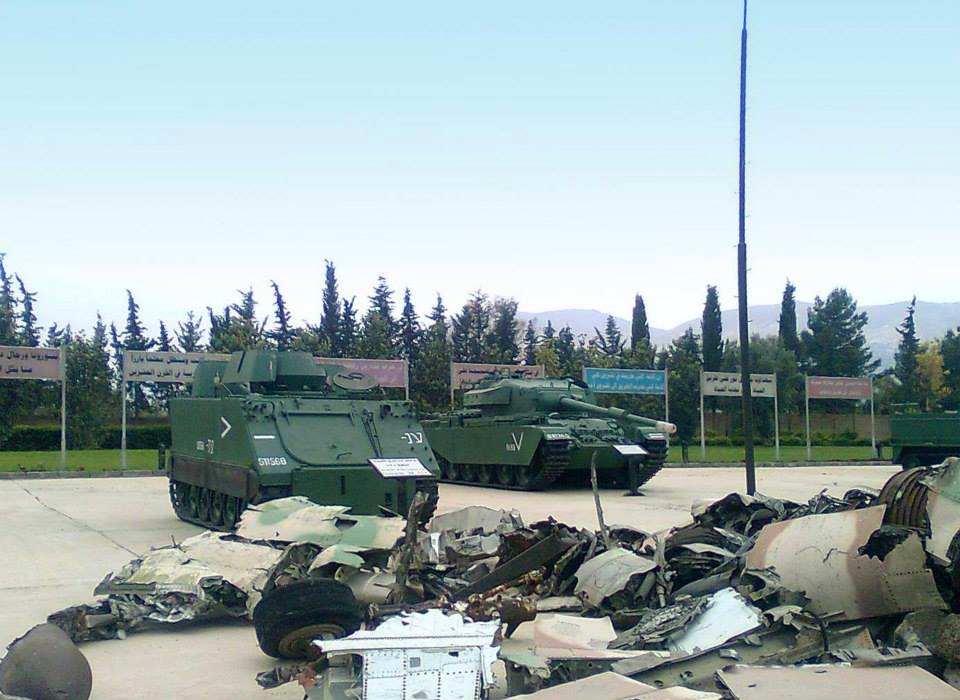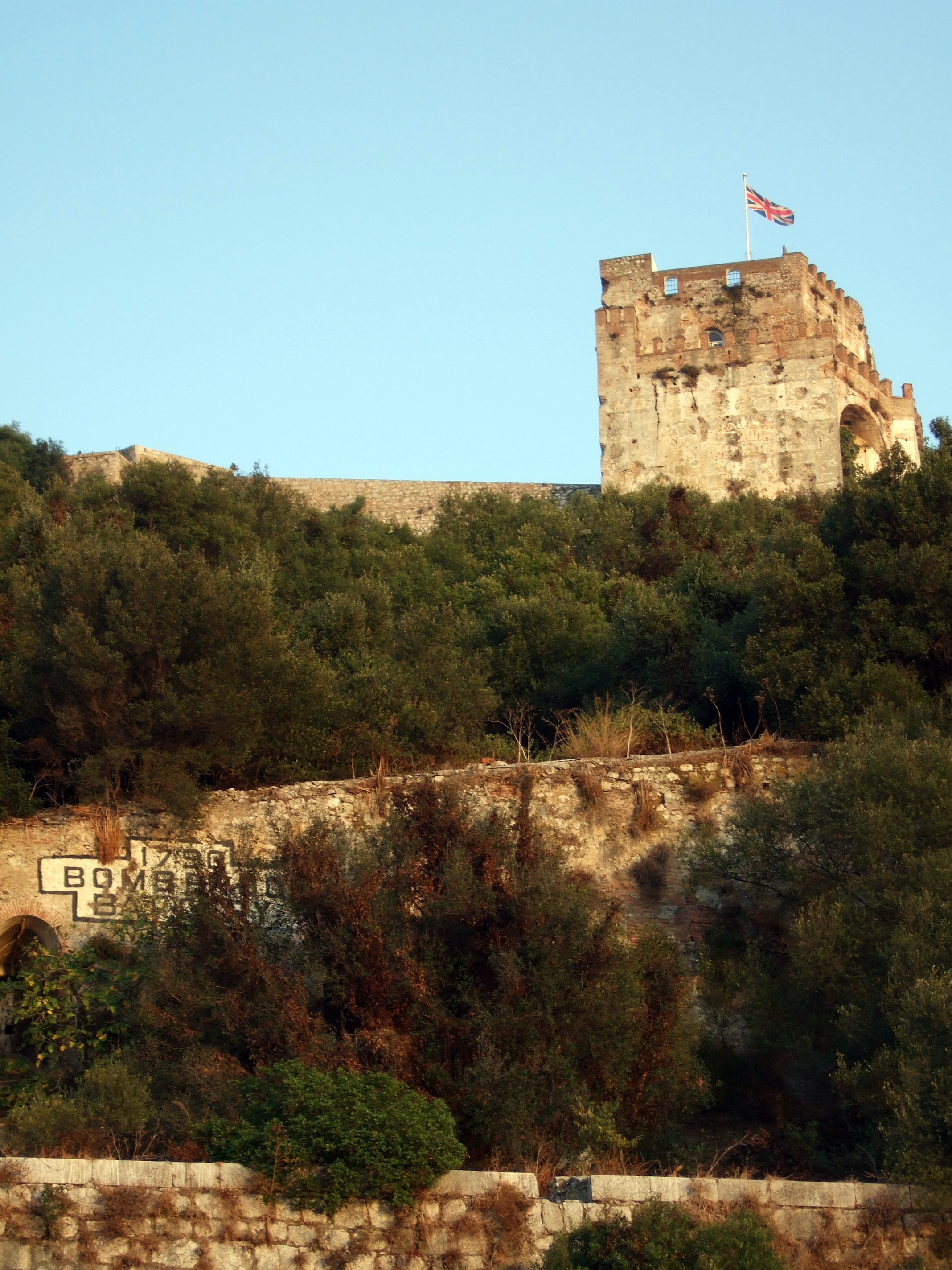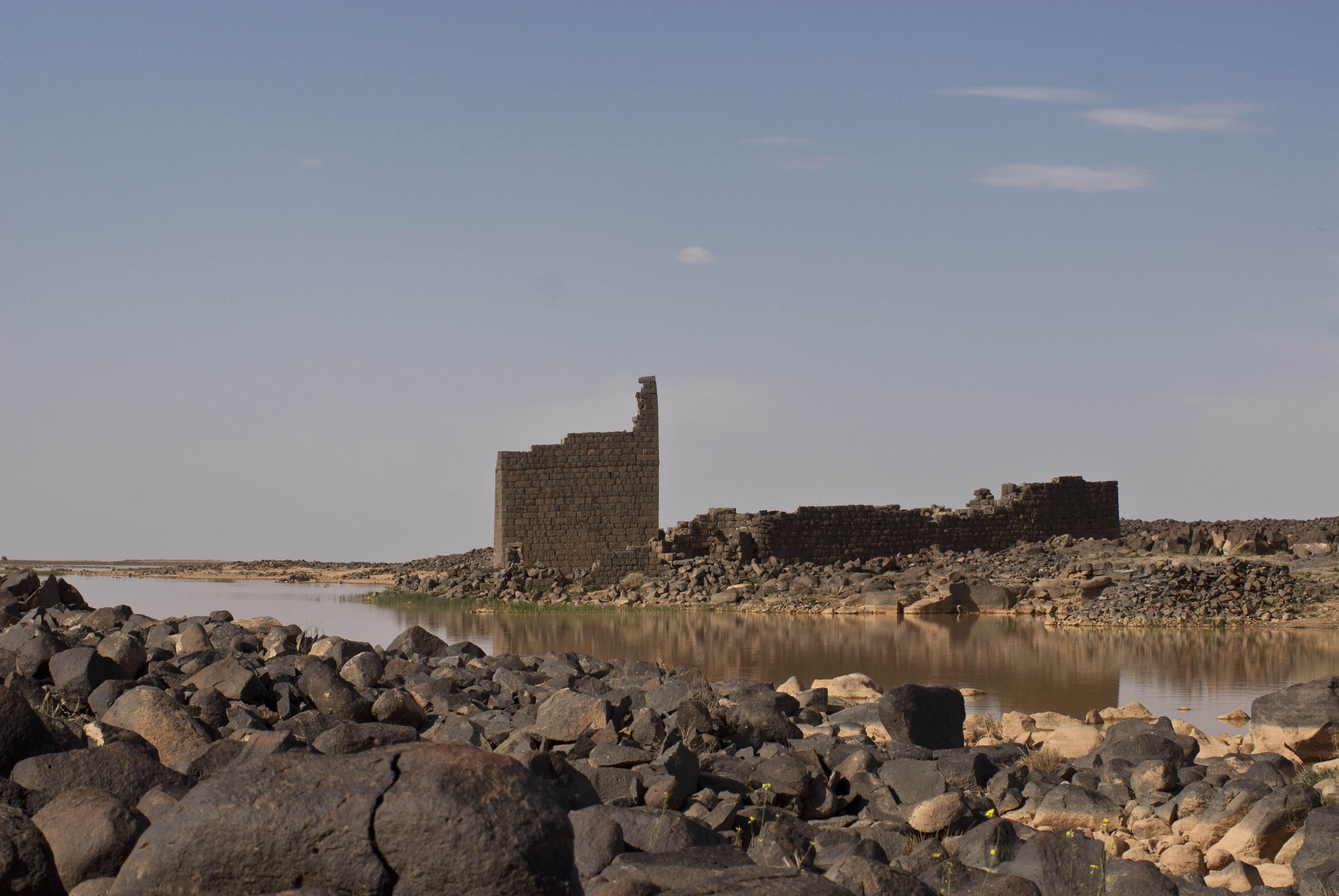|
October War Panorama
The October War Panorama () is a National museum located in Damascus, Syria which commemorates the memory of the Yom Kippur War, 1973 October War between Egypt and Syria against Israel from a Syrian perspective, and the 1982 Lebanon War battles that were fought against israel. History The museum, like Egypt's 6th of October Panorama, was built with the assistance of North Korea, as evident by the socialist-realist reliefs in the museum and a large mural showcasing Assad hand-in-hand with Kim il-Sung. The museum was inaugurated in 1998 by president Hafez al-Assad. Exhibits The museum displays the tanks, jets and weaponry used by Syria during the war, most of them USSR, Soviet-made, captured Israeli weaponry, such as Israeli tanks, most of them captured during the 1973 war, with an exception of a tank captured from Israel in the Battle of Sultan Yacoub which occurred during the 1982 Lebanon War, as well as the wreckage and remains of Israeli jets downed by the Syrian Air Defense ... [...More Info...] [...Related Items...] OR: [Wikipedia] [Google] [Baidu] |
Damascus
Damascus ( , ; ) is the capital and List of largest cities in the Levant region by population, largest city of Syria. It is the oldest capital in the world and, according to some, the fourth Holiest sites in Islam, holiest city in Islam. Known colloquially in Syria as () and dubbed, poetically, the "City of Jasmine" ( ), Damascus is a major cultural center of the Levant and the Arab world. Situated in southwestern Syria, Damascus is the center of a large metropolitan area. Nestled among the eastern foothills of the Anti-Lebanon mountain range inland from the eastern shore of the Mediterranean on a plateau above sea level, Damascus experiences an arid climate because of the rain shadow effect. The Barada, Barada River flows through Damascus. Damascus is one of the List of oldest continuously inhabited cities, oldest continuously inhabited cities in the world. First settled in the 3rd millennium BC, it was chosen as the capital of the Umayyad Caliphate from 661 to 750. Afte ... [...More Info...] [...Related Items...] OR: [Wikipedia] [Google] [Baidu] |
List Of Palmyrene Monarchs
Below is a list of Palmyrene monarchs, the monarchs that ruled and presided over the city of Palmyra and the subsequent Palmyrene Empire in the 3rd century AD, and the later vassal princes of the Al Fadl dynasty which ruled over the city in the 14th century. House of Odaenathus Odaenathus, the lord of Palmyra, declared himself king before riding into battle against the Sassanid Empire, Sassanians after news of the Roman Empire, Roman defeat at Battle of Edessa, Edessa reached him. This elevated Palmyra from a subordinate city to a de facto independent kingdom allied to Rome. Odaenathus later elevated himself to the title of King of Kings, crowning his son co-King of Kings in 263. The title was later passed to Vaballathus his son, before it was dropped for the title of King and later Emperor. Al Fadl dynasty References {{Reflist, 3 Palmyrene monarchs, * Lists of monarchs, Palmyrene ... [...More Info...] [...Related Items...] OR: [Wikipedia] [Google] [Baidu] |
Tourist Attractions In Damascus
Tourism is travel for pleasure, and the Commerce, commercial activity of providing and supporting such travel. World Tourism Organization, UN Tourism defines tourism more generally, in terms which go "beyond the common perception of tourism as being limited to holiday activity only", as people "travelling to and staying in places outside their usual environment for not more than one consecutive year for leisure and not less than 24 hours, business and other purposes". Tourism can be Domestic tourism, domestic (within the traveller's own country) or International tourism, international. International tourism has both incoming and outgoing implications on a country's balance of payments. Between the second half of 2008 and the end of 2009, tourism numbers declined due to a severe Economy, economic slowdown (see Great Recession) and the outbreak of the 2009 2009 flu pandemic, H1N1 influenza virus. These numbers, however, recovered until the COVID-19 pandemic put an abrupt end to th ... [...More Info...] [...Related Items...] OR: [Wikipedia] [Google] [Baidu] |
Monuments And Memorials In Damascus
A monument is a type of structure that was explicitly created to commemorate a person or event, or which has become relevant to a social group as a part of their remembrance of historic times or cultural heritage, due to its artistic, historical, political, technical or architectural importance. Examples of monuments include statues, (war) memorials, historical buildings, archaeological sites, and cultural assets. If there is a public interest in its preservation, a monument can for example be listed as a UNESCO World Heritage Site. The '' Palgrave Encyclopedia of Cultural Heritage and Conflict'' gives the next definition of monument:Monuments result from social practices of construction or conservation of material artifacts through which the ideology of their promoters is manifested. The concept of the modern monument emerged with the development of capital and the nation-state in the fifteenth century when the ruling classes began to build and conserve what were termed monument ... [...More Info...] [...Related Items...] OR: [Wikipedia] [Google] [Baidu] |
Buildings And Structures In Damascus
A building or edifice is an enclosed structure with a roof, walls and windows, usually standing permanently in one place, such as a house or factory. Buildings come in a variety of sizes, shapes, and functions, and have been adapted throughout history for numerous factors, from building materials available, to weather conditions, land prices, ground conditions, specific uses, prestige, and aesthetic reasons. To better understand the concept, see ''Nonbuilding structure'' for contrast. Buildings serve several societal needs – occupancy, primarily as shelter from weather, security, living space, privacy, to store belongings, and to comfortably live and work. A building as a shelter represents a physical separation of the human habitat (a place of comfort and safety) from the ''outside'' (a place that may be harsh and harmful at times). buildings have been objects or canvasses of much artistic expression. In recent years, interest in sustainable planning and building ... [...More Info...] [...Related Items...] OR: [Wikipedia] [Google] [Baidu] |
Golan Heights
The Golan Heights, or simply the Golan, is a basaltic plateau at the southwest corner of Syria. It is bordered by the Yarmouk River in the south, the Sea of Galilee and Hula Valley in the west, the Anti-Lebanon mountains with Mount Hermon in the north and Ruqqad, Wadi Raqqad in the east. It hosts vital water sources that feed the Hasbani River and the Jordan River. Two thirds of the area was Israeli occupation of the Golan Heights, occupied by Israel following the 1967 Six-Day War and then Golan Heights Law, effectively annexed in 1981 – an action unrecognized by the international community, which continues to consider it Israeli occupation, Israeli-occupied Syrian territory. In 2024 Israeli invasion of Syria, 2024, Israel occupied the remaining one third of the area. The earliest evidence of human habitation on the Golan dates to the Upper Paleolithic period. It was home to the biblical Geshur, and was later incorporated into Aram-Damascus,Michael Avi-Yonah (1979). ''The Hol ... [...More Info...] [...Related Items...] OR: [Wikipedia] [Google] [Baidu] |
Quneitra
Quneitra (also Al Qunaytirah, Qunaitira, or Kuneitra; , ''al-Qunayṭrah'' or ''al-Qunayṭirah'' ) is the largely destroyed and abandoned capital of the Quneitra Governorate in south-western Syria. It is situated in a high valley in the Golan Heights at 1,010 metres (3,313 feet) above sea level. Since 1974, pursuant to United Nations Security Council Resolution 350 and the Agreement on Disengagement between Israel and Syria, the city is inside the UN-patrolled buffer zone. Quneitra was founded in the Ottoman era as a way station on the caravan route to Damascus and subsequently became a garrison town of some 20,000 people. In 1946, it became part of the independent Syrian Republic within the Riff Dimashq Governorate and in 1964 became the capital of the split Quneitra Governorate. On 10 June 1967, the last day of the Six-Day War, Quneitra came under Israeli control. It was briefly recaptured by Syria during the 1973 Yom Kippur War, but Israel regained control in ... [...More Info...] [...Related Items...] OR: [Wikipedia] [Google] [Baidu] |
Jerusalem
Jerusalem is a city in the Southern Levant, on a plateau in the Judaean Mountains between the Mediterranean Sea, Mediterranean and the Dead Sea. It is one of the List of oldest continuously inhabited cities, oldest cities in the world, and is considered Holy city, holy to the three major Abrahamic religions—Judaism, Christianity, and Islam. Both Israel and Palestine claim Jerusalem as their capital city; Israel maintains its primary governmental institutions there, while Palestine ultimately foresees it as its seat of power. Neither claim is widely Status of Jerusalem, recognized internationally. Throughout History of Jerusalem, its long history, Jerusalem has been destroyed at least twice, Siege of Jerusalem (other), besieged 23 times, captured and recaptured 44 times, and attacked 52 times. According to Eric H. Cline's tally in Jerusalem Besieged. The part of Jerusalem called the City of David (historic), City of David shows first signs of settlement in the 4th ... [...More Info...] [...Related Items...] OR: [Wikipedia] [Google] [Baidu] |
Saladin
Salah ad-Din Yusuf ibn Ayyub ( – 4 March 1193), commonly known as Saladin, was the founder of the Ayyubid dynasty. Hailing from a Kurdish family, he was the first sultan of both Egypt and Syria. An important figure of the Third Crusade, he spearheaded the Muslim military effort against the Crusader states in the Levant. At the height of his power, the Ayyubid realm spanned Egypt, Syria, Upper Mesopotamia, the Hejaz, Yemen, and Nubia. Alongside his uncle Shirkuh, a Kurdish mercenary commander in service of the Zengid dynasty, Saladin was sent to Fatimid Egypt in 1164, on the orders of the Zengid ruler Nur ad-Din. With their original purpose being to help restore Shawar as the vizier to the teenage Fatimid caliph al-Adid, a power struggle ensued between Shirkuh and Shawar after the latter was reinstated. Saladin, meanwhile, climbed the ranks of the Fatimid government by virtue of his military successes against Crusader assaults and his personal closeness to al-Adid. A ... [...More Info...] [...Related Items...] OR: [Wikipedia] [Google] [Baidu] |
Tariq Ibn Ziyad
Tariq ibn Ziyad ( ; ), also known simply as Tarik in English, was an Umayyad commander who initiated the Muslim conquest of the Iberian Peninsula (present-day Spain and Portugal) against the Visigothic Kingdom in 711–718 AD. He led an army and crossed the Strait of Gibraltar from the North African coast, consolidating his troops at what is today known as the Rock of Gibraltar. The name "Gibraltar" is the Spanish derivation of the Arabic name (), meaning 'mountain of Tariq', which is named after him. Origins Medieval Arabic historians give contradictory data about Ṭāriq's origins and ethnicity. Some conclusions about his personality and the circumstances of his entry into al-Andalus are surrounded by uncertainty. The vast majority of modern sources state that Ṭāriq was a Berber ''mawla'' of Musa ibn Nusayr, the Umayyad governor of Ifriqiya. According to Ibn Khaldun, Tariq Ibn Ziyad was from a Berber tribe in what is now Algeria. Heinrich Barth mentions that Tariq Ibn Z ... [...More Info...] [...Related Items...] OR: [Wikipedia] [Google] [Baidu] |
Musa Bin Nusayr
Musa ibn Nusayr ( ''Mūsá bin Nuṣayr''; 640 – c. 716) was an Arab general and governor who served under the Umayyad caliph Al-Walid I. He ruled over the Muslim province of Ifriqiya, and directed the Islamic conquest of the Visigothic Kingdom that controlled the Iberian Peninsula and part of what is now southern France (Septimania). Background Various suggestions have been made as to his ancestry. Some say his father belonged to the Lakhmid clan of semi-nomads who lived east of the Euphrates and were allies of the Sassanians, while others claim he belonged to the Banu Bakr confederation. One account stated that Musa's father was taken captive after the fall of the Mesopotamian city of Ayn al-Tamr (633). According to this account, he was an Arab Christian who was one of a number being held hostage there. However, al-Baladhuri, relating the same events, states he was an Arab of the Balī tribe, from Jabal al-Jalīl in Palestine. As a slave, Musa's father entered the service ... [...More Info...] [...Related Items...] OR: [Wikipedia] [Google] [Baidu] |
Al-Walid I
Al-Walid ibn Abd al-Malik ibn Marwan (; – 23 February 715), commonly known as al-Walid I (), was the sixth Umayyad caliph, ruling from October 705 until his death in 715. He was the eldest son of his predecessor, Caliph Abd al-Malik (). As a prince, he led annual raids against the Byzantines from 695 to 698 and built or restored fortifications along the Syrian Desert route to Mecca. He became heir apparent in , after the death of the designated successor, Abd al-Malik's brother Abd al-Aziz ibn Marwan. Under al-Walid, his father's efforts to centralize government, impose a more Arabic and Islamic character on the state, and expand its borders were continued. He heavily depended on al-Hajjaj ibn Yusuf, his father's powerful viceroy over the eastern half of the caliphate. During his reign, armies commissioned by al-Hajjaj conquered Sind and Transoxiana in the east, while the troops of Musa ibn Nusayr, the governor of Ifriqiya, conquered the Maghreb and Hispania in the w ... [...More Info...] [...Related Items...] OR: [Wikipedia] [Google] [Baidu] |










